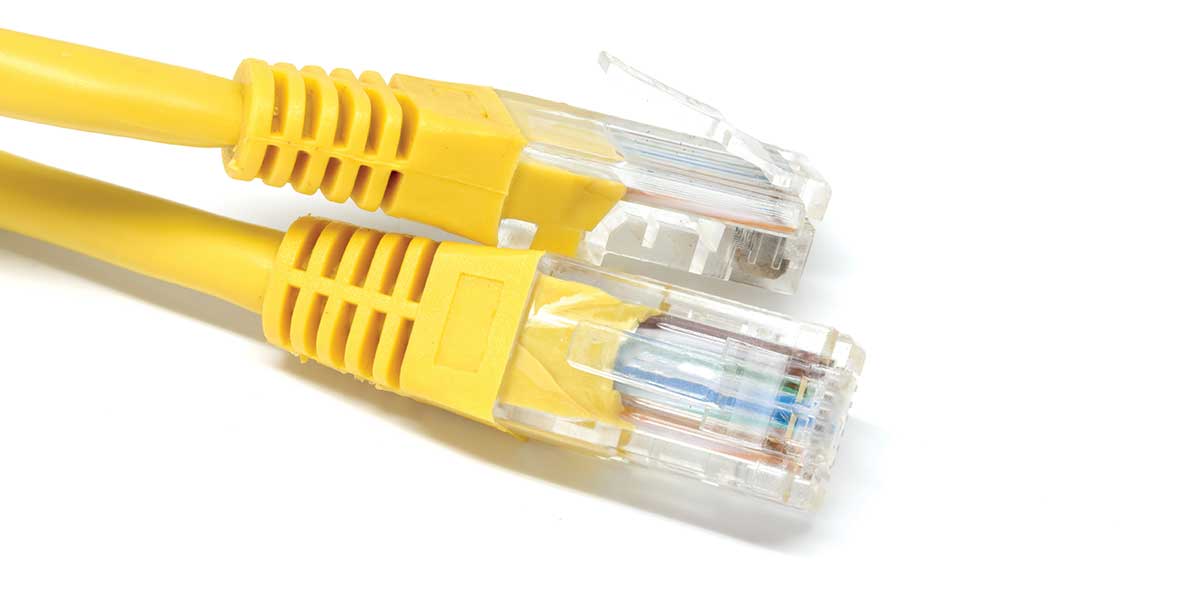Category 5 cable, commonly referred to as Cat5 cabling, remains one of the most widely used options for networking due to its cost-effectiveness and reliability. Whether you’re setting up a home office, expanding your small business network, or wiring a commercial space, Cat5 cabling provides fast and stable connectivity. However, common mistakes to avoid when installing Cat5 cabling often result in reduced performance, connection drops, and expensive rework later on.
At Expert Electric, we’ve seen firsthand the headaches that improper installations cause. That’s why we’re breaking down the most frequent errors DIYers and even some contractors make—and how to avoid them. With the right planning, tools, and professional support, your Cat5 installation can run smoothly and deliver long-lasting reliability.
Understanding Cat5 Cabling
Before diving into the mistakes, it’s important to understand what Cat5 cabling is and why it remains a staple in networking.
- Construction: Cat5 cables consist of four twisted pairs of copper wires, each insulated to reduce electromagnetic interference (EMI).
- Performance: They support speeds up to 100 Mbps over 100 meters, making them a reliable option for most residential and light commercial needs.
- Applications: Used for Ethernet connections, VoIP phones, routers, printers, and video transmission.
- Durability: Flexible and available in various lengths and configurations, Cat5 cabling can be adapted to many environments.
Cat5 has largely been replaced in high-performance networks by Cat5e, Cat6, and beyond, but it is still perfectly functional for many users, provided it is installed correctly.

Common Mistakes to Avoid When Installing Cat5 Cabling
1. Not Securing Cables Properly
Leaving Cat5 cables loose is a recipe for problems. Over time, cables can stretch, twist, or even kink, leading to damaged conductors and poor signal transmission. Always secure cables with proper clips, ties, or conduits to prevent unnecessary strain.
Pro Tip: Use Velcro straps instead of zip ties. Tight plastic ties can compress the cable and damage the twisted pairs inside.
2. Running Cat5 Cables Alongside Electrical Wiring
Perhaps the most common mistake to avoid when installing Cat5 cabling is running it parallel to electrical wiring. Electrical wires generate electromagnetic fields that interfere with network signals. This interference leads to slower speeds, dropped connections, or complete signal loss.
How to avoid it:
-
Maintain a separation of at least 6–12 inches from electrical cables.
-
When crossing paths is unavoidable, cross at a 90-degree angle to minimize interference.
3. Exceeding Maximum Cable Length
Cat5 cabling is designed to run up to 100 meters (328 feet). Exceeding this limit results in significant signal degradation and slower transmission. Unfortunately, many installers overlook this rule, assuming “a little more won’t hurt.”
Best practice: If your setup requires longer runs, install a network switch or repeater to maintain performance.
4. Ignoring Future Growth
Another common mistake to avoid when installing Cat5 cabling is failing to plan for future expansion. Running the bare minimum today may save money upfront, but it can cost far more in the long run when your network outgrows its capacity.
Solution:
-
Always install extra runs during initial setup.
-
Choose higher-grade cabling like Cat5e or Cat6 if you expect heavier data usage down the line.
5. Improper Termination and Crimping
Poorly crimped connectors are one of the leading causes of network failure. A single misaligned wire inside an RJ-45 connector can result in no connectivity or unreliable performance.
Tips for correct termination:
-
Use a quality crimping tool.
-
Follow the T568A or T568B wiring standard consistently across your installation.
-
Double-check that all eight wires are seated properly before testing.
6. Over-Bending and Kinking the Cable
Cat5 cables have a bend radius limit. Tight bends or kinks distort the twisted pairs inside, causing crosstalk and reducing signal strength.
Rule of thumb: Never bend a cable more tightly than four times its diameter.
7. Installing in High-Interference Zones
Running cables near fluorescent lights, HVAC systems, or heavy machinery introduces significant noise. These environmental factors can degrade performance even if the cabling is installed correctly elsewhere.
Fix: Route cabling through shielded conduits or consider shielded twisted pair (STP) Cat5 cable if interference is unavoidable.
8. Not Testing After Installation
Many DIY installers assume their job is done once the cables are connected. However, failure to test each run is a major mistake when installing Cat5 cabling. Testing ensures every cable meets performance standards and is wired correctly.
Recommended tools:
-
Cable testers
-
Certification testers (for larger networks)

Why Hire Licensed Electricians for Cat5 Installation?
While Cat5 cabling seems straightforward, small mistakes can have big consequences. Hiring professionals like Expert Electric ensures:
-
Code compliance – Safe, professional installation following local electrical and networking codes.
-
Future-proofing – Recommendations tailored to your current and future needs.
-
Reliability – Connections that work the first time and last for years.
-
Time savings – Avoid wasted hours troubleshooting problems that could have been prevented.
At Expert Electric, we’ve been helping homeowners and businesses across Vancouver and the Lower Mainland achieve safe, high-performing electrical and networking solutions for decades.
FAQs – Common Mistakes to Avoid When Installing Cat5 Cabling
Q: What is the maximum distance Cat5 cable can run?
A: Cat5 supports up to 100 meters (328 feet). Beyond that, signal degradation occurs, and you’ll need a switch or repeater.
Q: Can I run Cat5 cable alongside power cables?
A: No. Always maintain separation to avoid electromagnetic interference.
Q: What’s the difference between Cat5 and Cat5e?
A: Cat5e (“enhanced”) supports higher speeds and reduced crosstalk, making it better for most modern applications.
Q: Do I need special tools for installing Cat5 cabling?
A: Yes. You’ll need a crimping tool, punch-down tool, cable tester, and proper connectors to ensure reliable installation.
Q: Is Cat5 still worth installing in 2025?
A: Cat5 is sufficient for many residential and small office applications, but Cat5e or Cat6 may be a smarter investment for long-term use.
Final Thought
The common mistakes to avoid when installing Cat5 cabling are often simple but easy to overlook, like running cables near electrical wiring, exceeding distance limits, or failing to plan for the future. By taking the time to do it right or trusting licensed electricians like Expert Electric, you’ll enjoy a reliable, long-lasting network connection that keeps pace with your needs.
Don’t let poor installation slow down your home or business. Invest in professional wiring solutions and avoid costly errors down the road.
Contact Expert Electric
Ready to set up your Cat5 cabling or upgrade your electrical systems, with confidence? Contact the experts today.
📞 Call Us: 604-681-8338
📧 Email Us: info@expertelectric.ca
At Expert Electric, we deliver reliable installations, future-ready solutions, and peace of mind for every customer.


